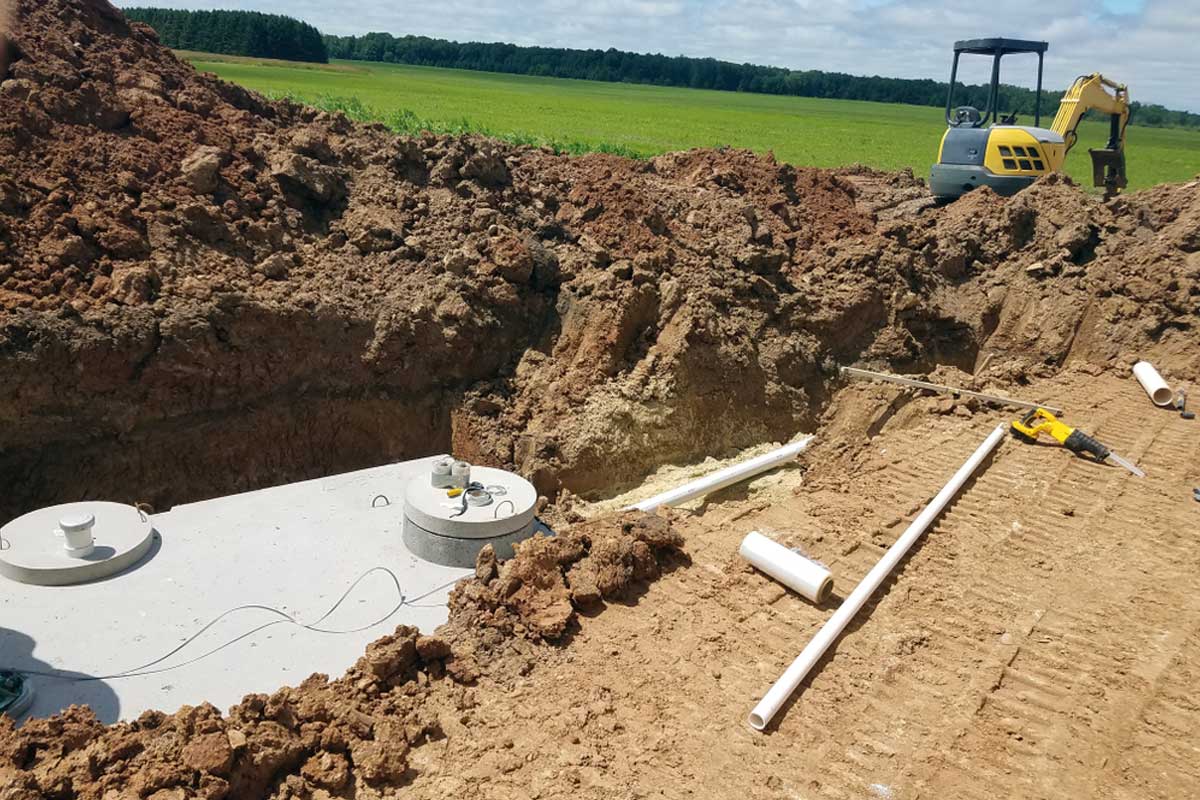Knowing the cost of maintaining a system is essential. Understanding the costs that could be incurred can allow you to budget effectively and avoid any unexpected costs. There are various factors that contribute to the cost to install septic tank and leach field.

The cost for installing a field and septic system will vary widely based on various factors. The size of the septic system is a major factor. larger homes or houses with higher water usage generally require bigger leach fields and septic tanks which will result in a greater overall cost. The topography and soil conditions could also influence the installation complexity and cost. Conditions that are difficult for soil may require additional excavation or special treatment systems that can drive up the expenses.
Another factor that can affect the costs of septic systems is the design of the septic tank and leach field systems that are selected. Prices vary depending on the material and design. Traditional concrete tanks are generally more affordable than alternative options such as fiberglass or plastic tanks. Advanced treatment systems and eco sustainable alternatives may be more costly, however they can provide benefits like improved water treatment and conservation.
The initial purchase of a septic system and leachfield is crucial, but it’s also essential to factor in the maintenance and replacement costs. Septic tanks be used for between 25 and 30 years depending on usage, maintenance and materials. As time passes, a septic system may need to be fixed or replaced. When determining the cost of replacing a septic tank, it is not enough to consider the price of the tank, but also its associated labor and any improvements required to meet current regulations.
The cost of replacing a septic system can be dependent on the type of tank and the size as well as how complex the installation is. In certain situations it might be necessary to remove the old tank and dispose of it in a proper manner and prepare the site to allow for the new installation. If the rules have changed since the initial installation of the septic tank it may cost more to bring the system up to current standards.
It is vital to take care of your septic tank by having it checked regularly. This will help you avoid costly expenses and ensure that the replacement process is carried out smoothly. Regular inspections will reveal the possibility of problems early which allows for quick repairs that can extend the life span of the tank. It is essential to regularly pump the tank in order so that solids do not accumulate.
It’s best to get estimates from reputable contractors before planning for the replacement or installation of the septic tank. Comparing these estimates can give you more information about the costs in your local area, and help you make a better decision. Also, inquire about any guarantees offered by the contractor on their work or the materials used.
It is crucial homeowners and property owners to understand the cost of a septic tank and the entire system of septic. You can plan your budget for the installation or replacing of a leachfield or septic system by taking into account factors such as dimensions, materials, soil condition, and possible cost over the long term. Regularly scheduled inspections, maintenance, and proper maintenance are essential to maximizing the lifespan of your septic system, and reduce the cost of future repairs. Keep in mind that investing into a well-functioning septic system doesn’t just ensure an efficient wastewater management, but it can also improve the overall quality and efficiency of your property.